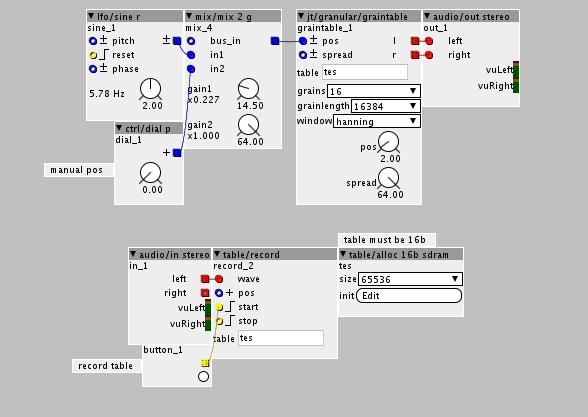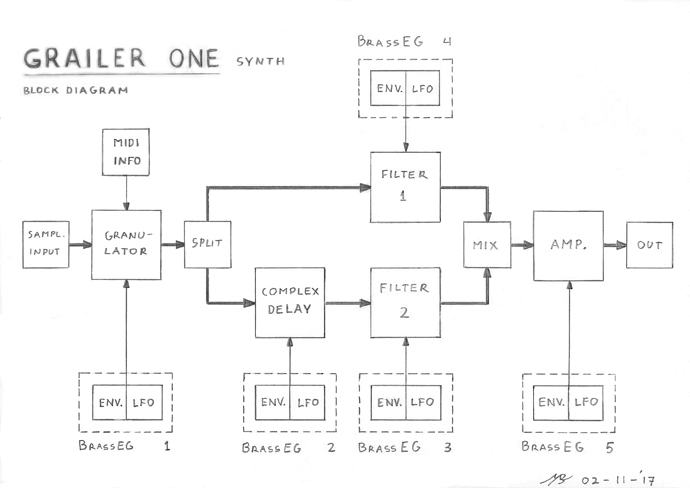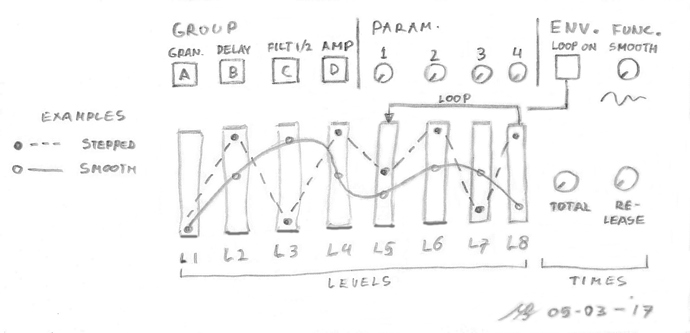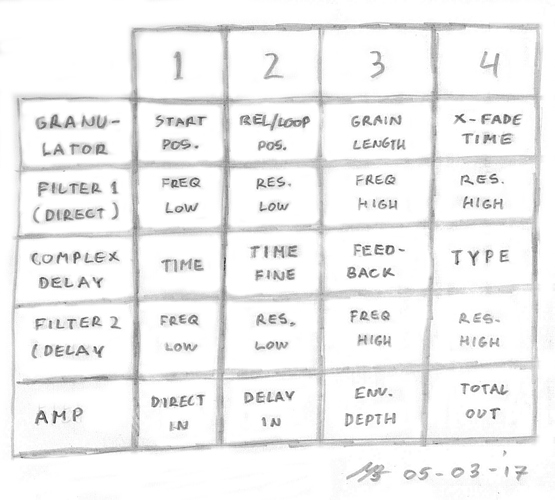@SirSickSik, @thetechnobear, @SmashedTransistors, @Sputnki, @lokki, @mtyas, @jaffasplaffa, @Eskadrone, @Jens_Groh, etc.
Hi Guys,
I've at last found time to turn back to the Axoloti again. Mine is actually fully runnig ny now! hurray!
Now I'd like to take this thread back to my initial intentions. I have namely refined my thinking about how to implement the original idea into the Axoloti
Bascially I have, also thanks to all your inputs, come to 3 main conclusions:
1 - As already expected from the start pure resynthesis is a very difficult proposition. Granular sampling however forms a good, practical alternative since Axoloti already offers solutions for that.
2 - A very interesting insight was triggered by @SirSickSik (if I remember correctly). He said that creating resonator responses for the Axoloti environment would be very time consuming. So I wondered which solution could be constructed form more standard components. What is a resonator actually? Normally it exists of an algorithm that imitates then complex echo response of a virbrating body. The specific character is then obtained from recreating the typical overtones / fixed harmonics of such an acoustic environment. Basically we are however always talking about a sort of short delay / reverb trail. So why not use flexible delay / fx processor setup in stead? Then one will actually be able to shape his own "responses" on the spot. One can compare it it to doing Karplus Strong modeling and impuls synthesis approximations on an analog modular synth.
3 - to come to a really managable solution a menu driven hardware interface would be preferable. To get in impression of the possibilities I have actually started up a new discussion see the hardware interface concept question thread. https://sebiik.github.io/community.axoloti.com.backup/t/hardware-interface-concept-question/3884
The pictures below reflect my present insights (working title: Grailer One. Geddit?):
The picture above shows a general block diagram
The sketch above shows my initial concept for a general programming tool. It combines a bunch of submenu selection swtiches and 4 general prameter controls and layout for a sort of advanced loopable envelope generator / LFO combination (working title BrassEG). Note that this layout can be connected to the Axoloti's 5 digital and 15 analog inputs. The afformentioned additional discussion focusses on the possibilitiy of implementing such a solution.
If this does not work one can of course come up with a layout that "only" takes care of 20 parameters/ setting throughout the whole setup and still do the rest via the computer screen. Do however please note that my solution focusses on a general hardware controller with 5 switches 7 pots and 8 sliders, which would be a very nice general solution anyway (so also for other Axoloti instruments).
This is a quick stab at a possible parameter matrix as assigned to the 4 parameter pots per section/page.
I hope this stuff inspires you guys a bit as well.
I know, I know. Of course it is still not clear if a polyphonic model of such an instrument can be run on a single Axoloti, especially with the additional demand of a menu driven system added to it, but we'll see. Dreaming (still) costs nothing and a reduced version of the concept must always be possible. For instance a monophonic version without a menu driven user matrix.
Please let me know what you think.
Marc










